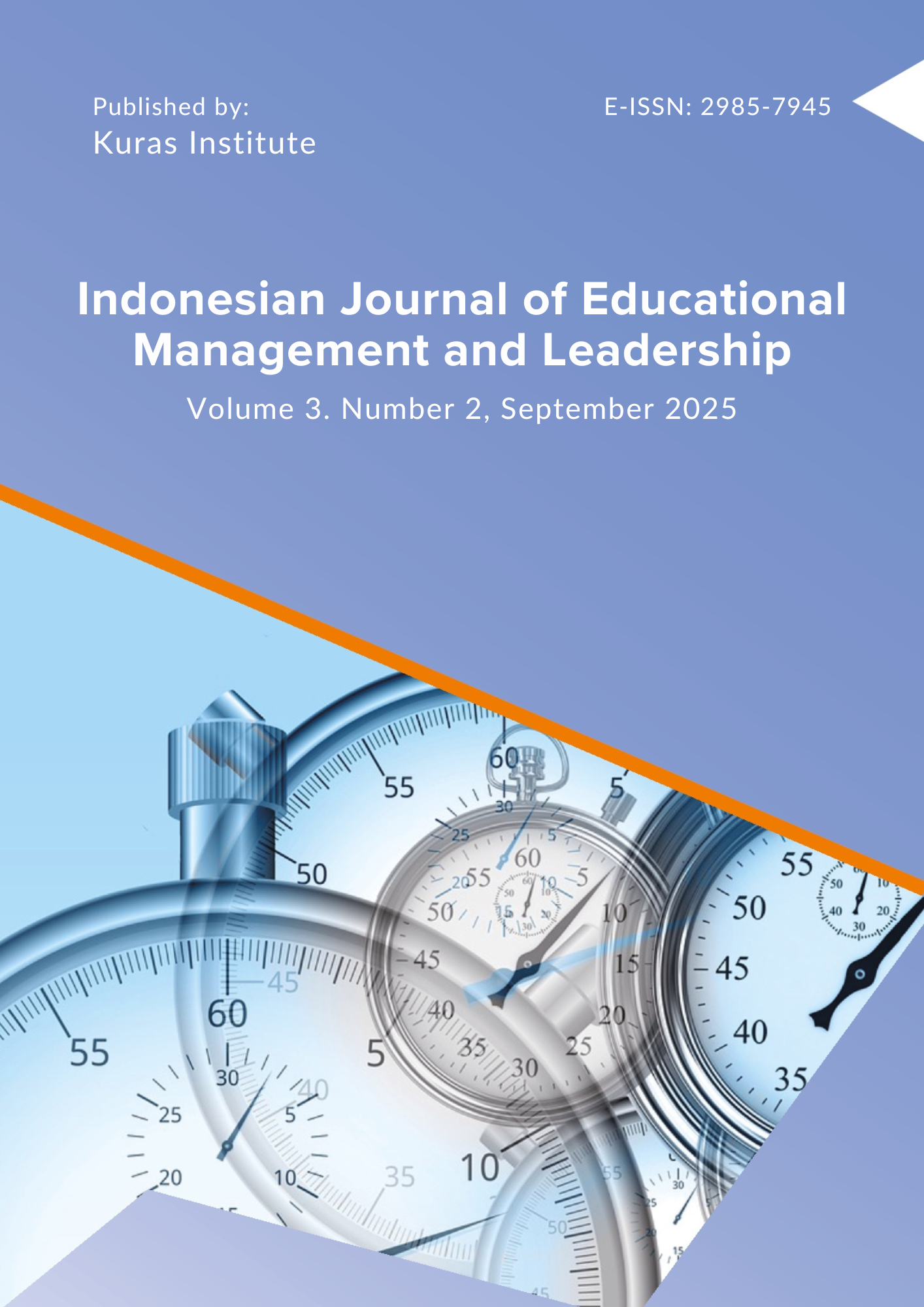The basis and strategies of gender mainstreaming in Islamic education: A conceptual review
Abstract
ABSTRACT
Purpose − This paper seeks to articulate the foundations and strategies for gender mainstreaming within Islamic education. This topic is urgent, as gender inequality in education continues to be a significant issue today. Furthermore, Islam is frequently viewed as contradictory to the principle of gender equality due to its textual interpretations of the Quran and hadith, which serve as primary sources for Muslims.
Method − The researchers conducted a qualitative literature review of various texts related to Islamic education, aiming to gather insights from Muslim philosophers regarding the foundations of gender mainstreaming in education. Data collection involved techniques such as active listening and note-taking. The analysis of the data was carried out in three phases: reduction, presentation, and inductive conclusion
Findings − Based on the analysis conducted, it is clear that Islam actively supports gender mainstreaming efforts in education to foster social justice and equality. Islam does not differentiate between men and women in terms of their opportunities to acquire knowledge and become exemplary individuals, or khalifatullah fi al-ardh (stewards of the earth). Muslim philosophers endorse gender equality in education both implicitly and explicitly, with no philosophers advocating for discrimination against either gender in the pursuit of quality education. To effectively implement gender mainstreaming in Islamic education, the following strategies should be adopted: (1) Emphasize the importance of allowing students the freedom to choose their fields of study. (2) Foster collaboration between the state and society—through influential organizations or figures—to advance gender mainstreaming in education. (3) Establish a school environment that is rooted in principles of gender equality. (4) Develop educational practices and school management that are sensitive and responsive to gender considerations. (5) Encourage the government, particularly the Ministry of Religious Affairs, to create model or pilot schools that exemplify gender equality and can serve as examples for replication. (6) Provide intensive training and seminars focused on gender issues for educators within both the Ministry of Education and the Ministry of Religious Affairs.
Downloads
References
Al-Abrasyi, M. A. (1970). Dasar-dasar Pokok Pendidikan Islam. Penerbit Bulan Bintang.
Asy-Syaibani, O. M. at-Toumy. (1988). Falsafatu at-Tarbiyah al-Islamiyyah. Dar al-Arabiyyah Lilkitab.
Dwijowijoto, R. N. (2008). Gender dan Strategi Pengarus-utamaannya di Indonesia. Pustaka Pelajar.
Engineer, A. (2008). The Rights of Women in Islam. Sterling Publishers Pvt. Ltd.
Fatihah, I. (2018). Peran Nahdlatul Ulama (NU) dalam bidang pendidikan karakter. Al-Tarbawi Al-Haditsah: Jurnal Pendidikan Islam, 3(2). https://doi.org/10.24235/tarbawi.v3i2.3116
Handayani, T., & Widodo, W. (2015). Konsep Dasar Implementasi Pengarusutamaan Gender Pada Pendidikan Keaksaraan Fungsional Di Propinsi Jawa Timur. Jurnal Humanity, 10(1).
Husain, K. (2001). Peran Ibu dalam Mendidik Generasi Muslim. Firdaus.
Kaelan, K. (2010). Metode Penelitian Agama Kualitatif Interdisipliner. Paradigma.
Karimullah, S. S., Nugraha, A. R., Nisaâ, I. S., & Andini, Y. (2023). The relevance of feminism in promoting gender reform in the context of progressive Islam. Jurnal Anifa: Studi Gender Dan Anak, 4(2), 1-15.
Langgulung, H. (1987). Asas-asas Pendidikan Islam. Pustaka al-Husna.
Lubis, A. (2016). Konsep dan isu gender dalam Islam. Ihya Al-Arabiyah: Jurnal Pendidikan Bahasa Dan Sastra Arab, 2(1).
Maragustam, M. (2010). Mencetak Pembelajar Menjadi Insan Paripurna (Falsafah Pendidikan Islam). Nuha Litera.
McLaren, P. (2010). Revolutionary Critical Pedagogy. InterActions: UCLA Journal of Education and Information Studies, 6(2). https://doi.org/10.5070/D462000683
Muthahhari, M. (2012.). Filsafat Perempuan Dalam Islam. Abbaz Production.
Muthmainnah, L. (2017). Membincang Kesetaraan Gender dalam Islam (Sebuah Perdebatan dalam Wacana Hermeneutik). Jurnal Filsafat, 16(2), 202–213.
Penyusun, T. (2002a). Bias Jender Dalam Pemahaman Islam. Gama Media.
Penyusun, T. (2002b). Panduan Pelaksanaan Inpres Nomor 9 Tahun 2000 tentang Pengarusutamaan Gender dalam Pembangunan Nasional. Kementerian Pemberdayaan Perempuan.
Penyusun, T. (2010). Membangun Relasi Setara antara Perempuan dan Laki-laki Melalui Pendidikan Islam. Direktoral Jenderal Pendidikan Kementerian Agama-Australia Indonesia Partnership.
Putra, A. T. A. (2014a). Peran Gender dalam Pendidikan Islam. JPI UIN SUnan Kalijaga Yogyakarta, 3(2), 327–343. https://doi.org/10.14421/jpi.2014.32.327-344
Rahayu, N. (2012). Kesetaraan Gender Dalam Aturan Hukum Dan Implementasinya Di Indonesia. Jurnal Legislasi Indonesia, 9(1), 15–32.
Rahminita, S. H. (2018). Implementasi Konvensi Penghapusan Segala Bentuk Diskriminas Terhadap Perempuan (Cedaw) Dan Korelasinya Terhadap Ketidaksetaraan Gender Di Cina. JURNAL ILMU SOSIAL, 16(1), 41–46. https://doi.org/10.14710/jis.16.1.2017.41-46
Shang, B. (2022). Tackling gender inequality: definitions, trends, and policy designs. International Monetary Fund. https://doi.org/10.5089/9798400224843.001
Subhan, P. D. Z. (2015). Al-Qur’an dan Perempuan. Prenada Media.
Sumar, W. T. (2015). Implementasi Kesetaraan Gender Dalam Bidang Pendidikan. MUSAWA IAIN PALU, 7(1), 158–182.
Vázquez, A., López-Rodríguez, L., & Brambilla, M. (2024). Acknowledging that men are moral and harmed by gender stereotypes increases men’s willingness to engage in collective action on behalf of women. Sex Roles, 90(3), 417-443. https://doi.org/10.1007/s11199-024-01444-7
Copyright (c) 2025 Muhamad Agus Mushodiq, Muhammad Kasih Majeed Chaudhary

This work is licensed under a Creative Commons Attribution-ShareAlike 4.0 International License.
Authors who publish in this journal agree to the following terms:
- Authors retain copyright and grant the journal right of first publication with the work simultaneously licensed under a Attribution-ShareAlike 4.0 International (CC BY-SA 4.0) License that allows others to share the work with an acknowledgement of the work’s authorship and initial publication in this journal.
- Authors are able to enter into separate, additional contractual arrangements for the non-exclusive distribution of the journal’s published version of the work (e.g., post it to an institutional repository or publish it in a book), with an acknowledgement of its initial publication in this journal.
- Authors are permitted and encouraged to post their work online (e.g., in institutional repositories or on their website) prior to and during the submission process, as it can lead to productive exchanges, as well as earlier and greater citation of published work (See The Effect of Open Access).


